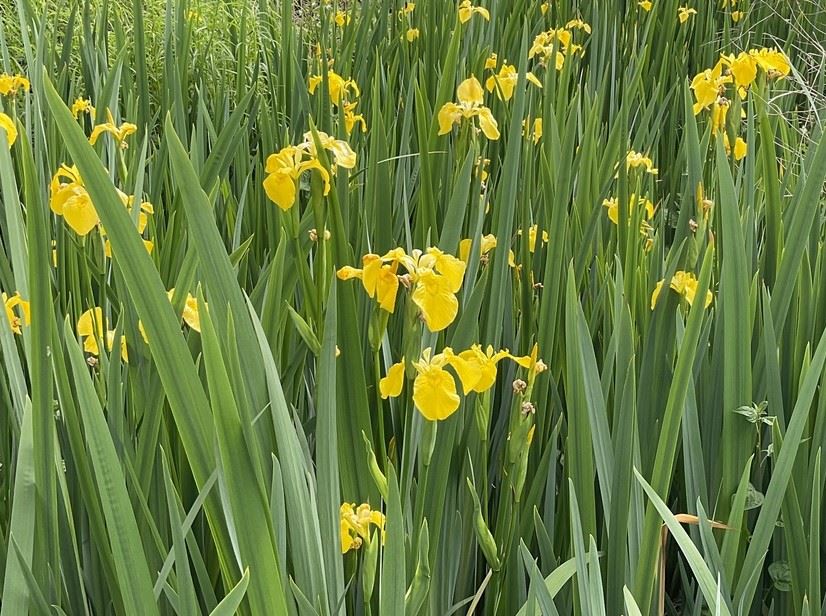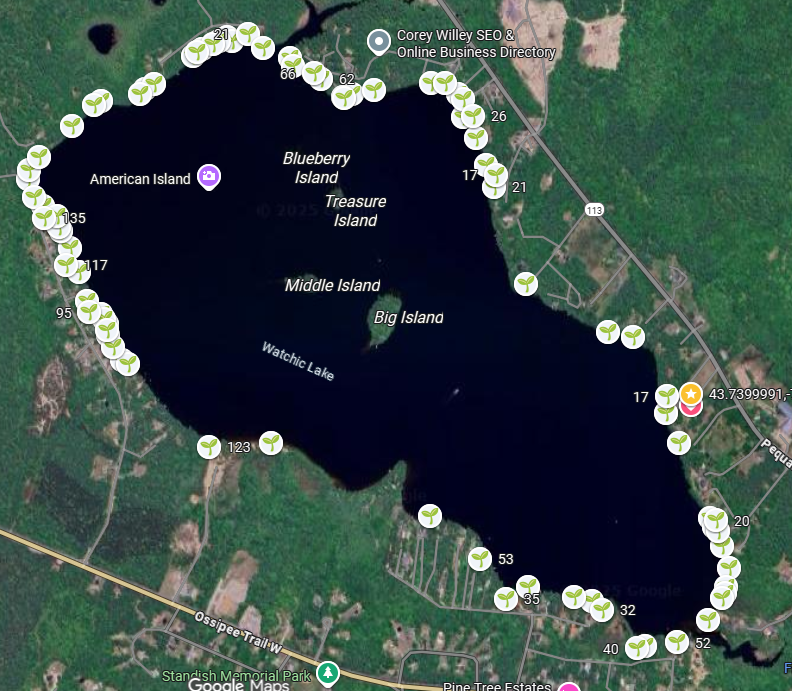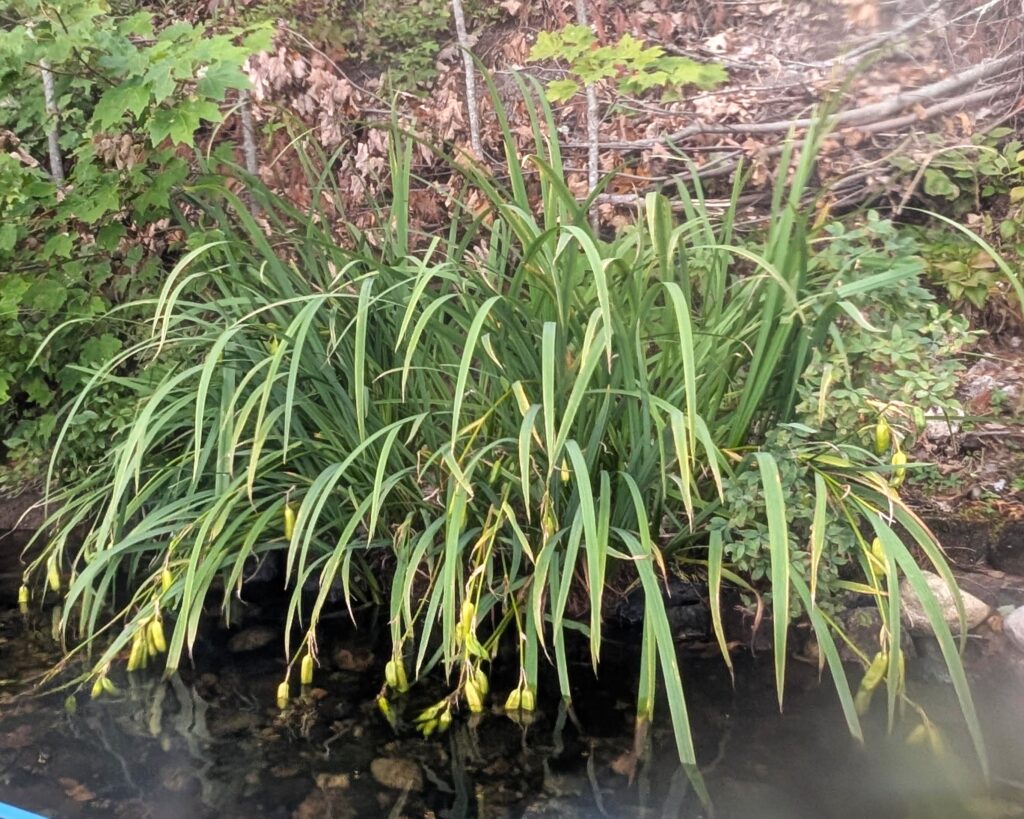Yellow Iris
What is it? Yellow Iris (Iris pseudacorus) is a non-native perennial plant in the iris family, which the Maine Natural Areas Program has identified as “severely invasive”. Yellow iris blooms in May-July with yellow flowers, reproduces via rhizome (root) fragments, and through the production of hundreds of seeds that can float and form new
colonies elsewhere. All parts of the yellow iris, especially the rhizomes, are toxic to animals and humans if ingested.

How do you identify it? Yellow iris produces yellow flowers in spring and large green,
glossy seed pods in the late summer-fall. Yellow iris leaves are flattened, bladelike, and
arranged in a fan, and can grow 1-5 feet tall. The leaves have a defined midrib or mid-
vein, which sets them apart from similar-looking plants like cattail (Typha spp.) or native
blue flag (Iris versicolor).


Why is it a problem? Yellow iris forms thick mats that can cut off sunlight, lower native
plant diversity, and reduce areas of deeper water needed by fish and waterfowl. Yellow
iris impacts water quality by reducing water flow and increasing sedimentation, creating
suitable habitat for itself and other invasive plant species. Like other invasives, such as
bittersweet and purple loosestrife, it displaces native plants needed by wildlife and the
health of the lake.
Where is it on Watchic Lake? Yellow iris is widespread around the Watchic shoreline. Watchic Lake Association (WLA) volunteers have mapped the lake to identify the current yellow iris locations (see map). In September 2025, WLA volunteers removed hundreds of seed pods from the existing plants they identified around the lake to slow the spread. Seed pods and plant material were taken to the Standish dump for incineration.

September 2025
What you should do:
- In your yard: Check that you do not have yellow iris planted in your gardens or
landscaping. If you do, it should be carefully removed. The safest way to
eliminate the plant is to dig it up, and remember that it can spread through root
fragments as small as 2 cm. It’s unlikely that you will be able to remove all
rhizomes on the first try, complete removal is likely to be a several-year process. - If you are removing yellow iris: You must dig up the reddish-colored rhizome
(root) and dispose of it with the plant. Do not let any rhizome fragments escape.
Because contact with the plant sap can also cause skin irritation, it is
recommended that you wear long pants and gloves. - Disposal: All plants, roots, flowers, and seed pods that are removed must be
bagged and brought to the dump for incineration. DO NOT DISPOSE OF
PLANTS AND ROOTS ON LAND OR IN COMPOST. - On the shore: There is a danger of causing shoreline erosion if large plants are
removed without remediation. For this fall and winter, we recommend leaving
shoreline plants. The WLA Environmental Committee, in conjunction with
Maine DEP, is developing a multi-year program to safely eradicate this
invasive plant from the lake and surrounding wetlands. We will reach out to
landowners to provide guidance on best practices and help with removal in Spring 2026. - Our plan is to start tackling removal in the spring, when the plants are blooming
and are easier to identify. If you see yellow iris on your property, have questions
or concerns, or would like to volunteer to help in this effort, please contact
watchiclakeassociation@gmail.com. - For additional Information about Yellow Iris, we recommend this report by the
Ontario Invasive Plant Council.




